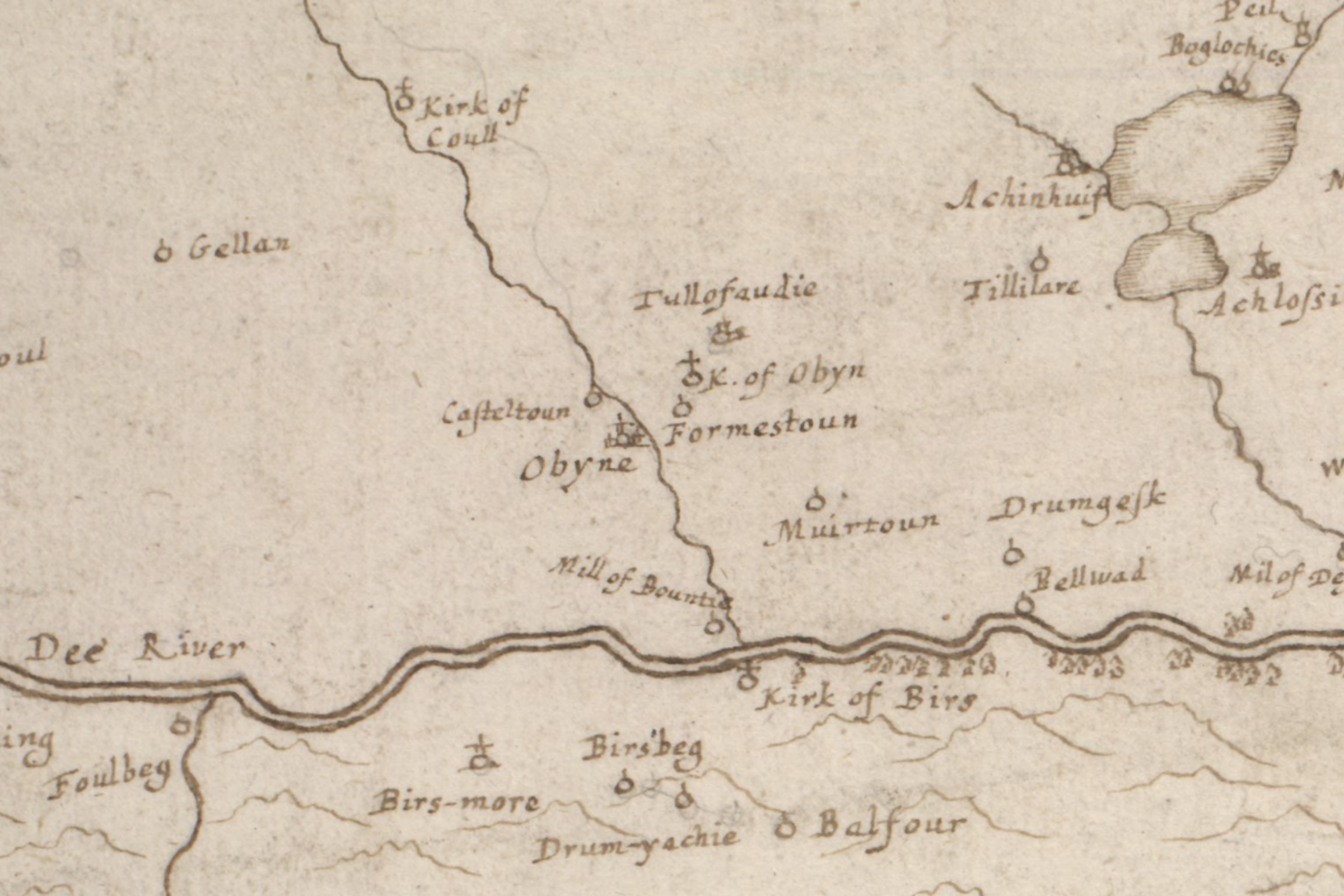-
Mapping 1696: Cromars and Robbs in the Poll Book

Of all the maps I’ve researched, this one expresses the least ambiguous geographic relationship between Aboyne, Formaston, and Kirkton of Aboyne, with the Tarland Burn clearly running between Aboyne and Formaston. This informs my theoretical distinction and placement on an evolving new map of the Aberdeenshire Poll Book. Mapmaker: Gordon, Robert, 1580-1661 Title: The draught of the…
-
Genealogical data and visual design II: mixing metaphors

In our previous post, we discussed Edward Tufte’s notions about the rich visual expression of data, and we introduced some basic metaphors used in genealogical diagramming: trees, fans, roads, timelines, quilts, and networks. We observed any one of these can express perhaps one or two classes of data very well, but often at the expense…
-
Genealogical data and visual design I: metaphors in visualization

Will they tell your story? TimeWho lives, who dies, who tells your story? TimeWill they tell your story? TimeWho lives, who dies, who tells your story? — Lin-Manuel Miranda Genealogy is data… … but what does this data do? Well, for starters, it can tell your story. Data, alas, does not willfully do so. Left…
-
The Cromar-Robb line IV: allies and associates in the Scottish Diaspora

Many names Where the previous post debated the merits of a one-name study for the Cromar family, this one takes on the reality that “one-name” is an abstraction. Like anyone else on earth, Cromars are intertwined with a vast array of family lines, but given the close-knit nature of communities bound by geography and technology,…
-
The Cromar-Robb line III: toponymies, diminutives and one-name studies

World-wide distribution of the Cromar and Robb surnames in 2014. Dark red equates to higher frequency, transitioning to pale yellow representing lower incidence. Robb is more geographically dispersed, but Cromar seems to be easier to trace. We’ll explore why. | Screen-captures from Forebears A couple of posts back, I had arrived at a mid-point in…
-
The Cromar-Robb line II: observations on the phenomenon of generational “drift”

As I continue to build the descendancy chart for Peter Cromar 1690, which focuses on the Cromar side of the Cromar-Robb line, I can’t help but notice oddities in the data as it arrives at a certain critical mass. Patterns of migration and settlement, the frequency with which certain family names enter the line, and…






